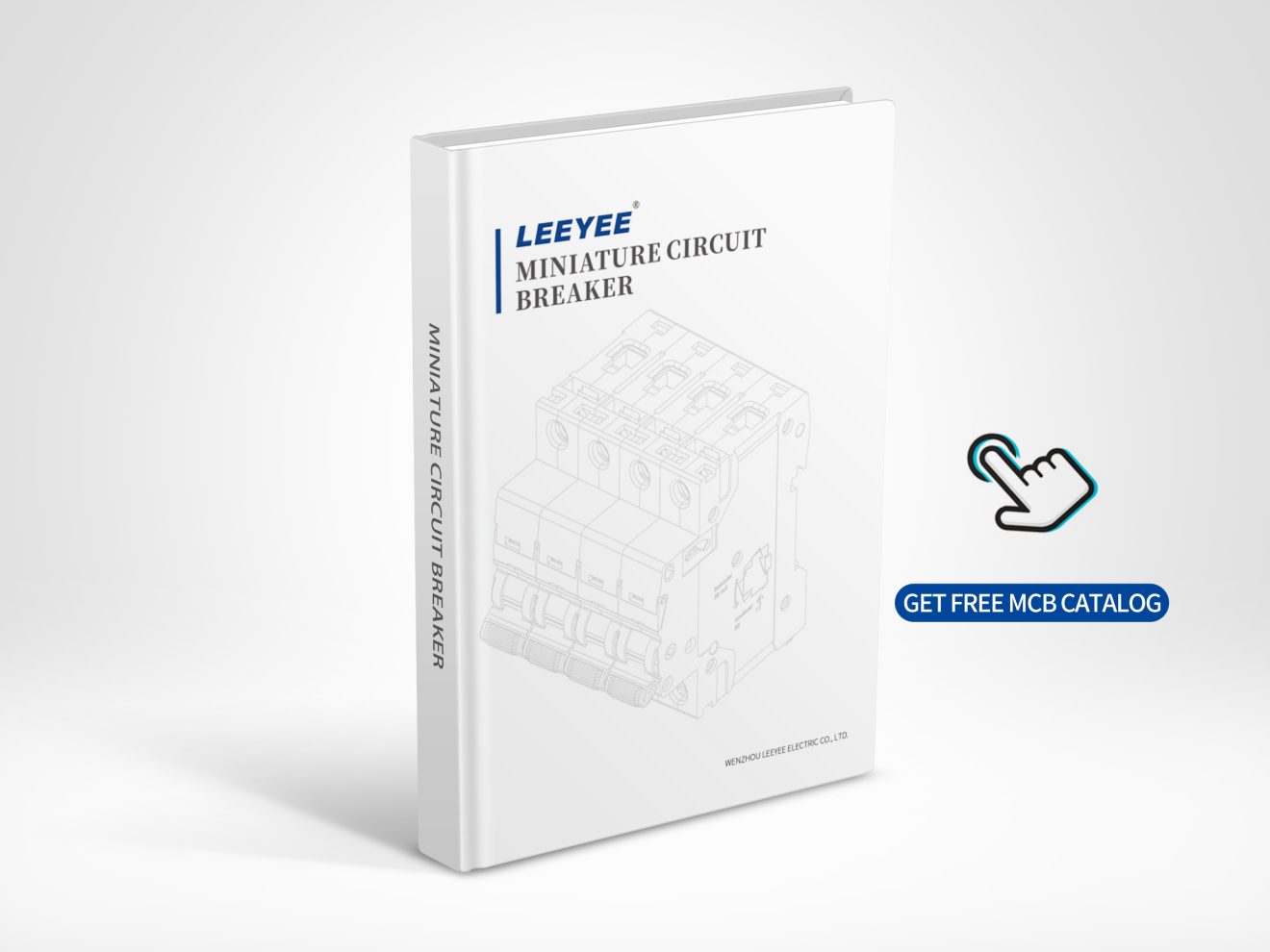Unexpected faults can damage equipment, cause costly downtime, and risk safety. LEEYEE, a professional electrical protection supplier, provides high-performance circuit protectors with industry-leading breaking capacity and precise trip characteristics.
A circuit protector is a safety device that automatically interrupts electrical current when overloads, short circuits, or faults occur. It prevents equipment damage, fire hazards, and system downtime by isolating faulty circuits. Industrial-grade circuit protectors, like those from LEEYEE, are designed with high breaking capacity, fast response times, and compliance with IEC and UL standards.
Let’s explore how circuit protectors work, their types, technical parameters, and why they’re critical for modern electrical systems.
What Does a Circuit Protector Do?
A circuit protector detects abnormal electrical conditions—such as overloads, short circuits, or ground faults—and rapidly disconnects the faulty circuit from the power source. This action limits thermal and mechanical stress on conductors and equipment, preventing fire hazards and reducing repair costs.
Unlike simple fuses, modern circuit protectors can be reset or replaced without rewiring. In industrial contexts, devices like Miniature Circuit Breakers (MCBs) and Residual Current Circuit Breaker with Overcurrent protection (RCBOs) are classified as circuit protectors.
According to IEC 60947 and IEC 60898 standards, an effective circuit protector must:
-
Operate within milliseconds for high fault currents
-
Have adequate breaking capacity (Icu) to handle the maximum possible fault current
-
Provide clear status indication
How Circuit Protectors Work
Circuit protectors use one or more trip mechanisms:
-
Thermal trip unit – Uses a bimetal strip that bends when overheated by sustained overload, releasing the trip latch.
-
Magnetic trip unit – Uses an electromagnet that activates during short-circuit conditions, tripping almost instantly.
-
Electronic trip unit – Measures current electronically and allows adjustable protection settings, common in industrial MCCBs.
When the device trips, it creates a physical gap between contacts, interrupting current flow. High-performance models include arc extinguishing chambers to safely quench the arc generated during interruption.
Types of Circuit Protectors
-
Miniature Circuit Breakers (MCBs) – For branch circuit protection up to 125A, typically used in commercial and residential panels.
-
Molded Case Circuit Breakers (MCCBs) – For higher capacity (up to 1600A) industrial applications.
-
Residual Current Circuit Breakers (RCCBs) – Detect leakage current to ground, preventing electric shocks.
-
RCBOs – Combine overcurrent and residual current protection in one device.
-
Fuses – One-time-use overcurrent protection, still used in some high-speed or high-voltage applications.
LEEYEE’s range includes TUV, CE, CB-certified MCBs and RCBOs with customizable trip curves (B, C, D) to match specific load profiles.
Technical Parameters That Matter
When selecting a circuit protector, engineers should evaluate:
| Parameter | Importance | LEEYEE Specification |
|---|---|---|
| Rated Current (In) | Defines maximum continuous load | 1A–125A for MCBs |
| Breaking Capacity (Icu) | Must exceed maximum fault current | 6kA to 10kA (MCBs) |
| Trip Curve | Defines response time vs fault current | B, C, D curves |
| Rated Voltage | System compatibility | 230/400V AC |
| Standards Compliance | Ensures safety and reliability | IEC 60898-1, IEC 61009-1 |
For industrial plants with high inrush currents, D-curve MCBs are recommended to avoid nuisance tripping.
Importance of Circuit Protectors in Industrial Systems
Circuit protectors are not just about equipment safety—they ensure continuity of operations. In manufacturing plants, an unprotected fault can halt production lines, causing losses far beyond repair costs. In power distribution, properly coordinated protection avoids unnecessary outages by isolating only the faulty section.
According to NFPA (National Fire Protection Association) data, electrical distribution equipment accounts for over 10% of industrial fires—many preventable with proper circuit protection.
LEEYEE’s Expertise in Circuit Protection
LEEYEE is a professional manufacturer in the low-voltage electrical protection industry, specializing in MCBs, RCBOs, SPDs, and isolators. For circuit protection, LEEYEE offers:
-
Breaking capacity up to 10kA
-
Precision trip mechanisms with ±5% tolerance
-
Custom OEM/ODM designs for panel builders and system integrators
-
Compliance with IEC, CB, TUV, CE certifications
-
15 years manufacturing experience with 8 production lines and global export capability
These parameters position LEEYEE’s products above many industry competitors, ensuring reliability in critical applications.
Conclusion
A circuit protector is your first line of defense against surge electric events, overloads, and short circuits—keeping systems safe and operational.
FAQs: Circuit Protector
Q1: What does a circuit protector do in a solar power system?
It prevents damage to inverters and wiring by disconnecting the circuit during faults.
Q2: Can a circuit protector stop surge electric events?
It can interrupt fault currents caused by surges, but for full surge electric protection, pair it with an SPD.
Q3: How do I choose the right trip curve?
Select based on load type—B curve for resistive loads, C for mixed loads, D for high inrush loads.
Q4: Is there a difference between a circuit protector and a circuit breaker?
The term “circuit protector” is broader; circuit breakers are a common type of circuit protector.
Q5: How often should circuit protectors be tested?
At least annually, or after significant fault events, following IEC maintenance guidelines.
Disclaimer:
This content is for informational purposes only. For specific system design, consult a licensed electrical engineer or certified protection specialist.

